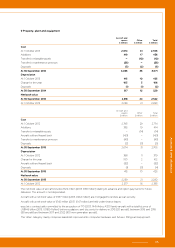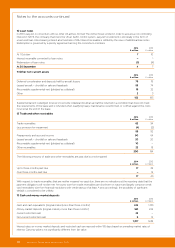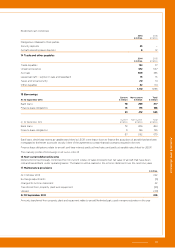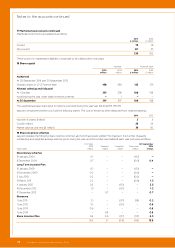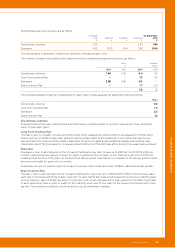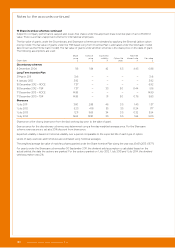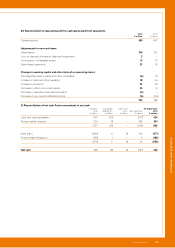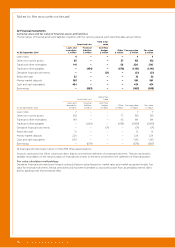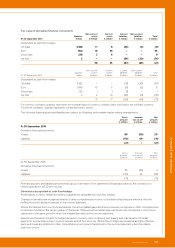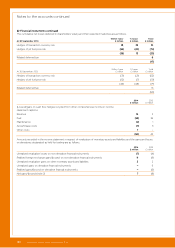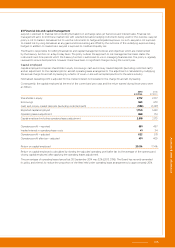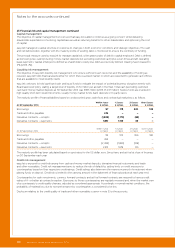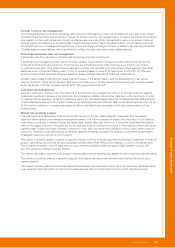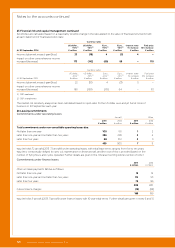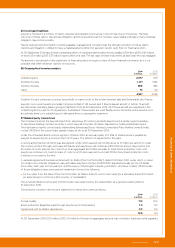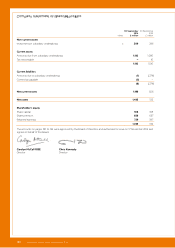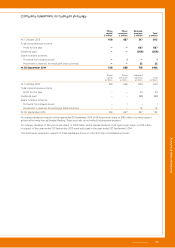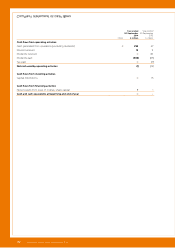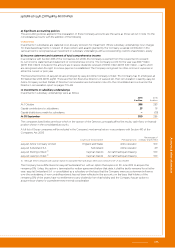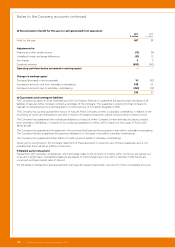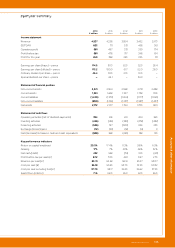EasyJet 2014 Annual Report Download - page 127
Download and view the complete annual report
Please find page 127 of the 2014 EasyJet annual report below. You can navigate through the pages in the report by either clicking on the pages listed below, or by using the keyword search tool below to find specific information within the annual report.
Accounts & other information
www.easyJet.com 125
23 Financial risk and capital management
easyJet is exposed to financial risks including fluctuations in exchange rates, jet fuel prices and interest rates. Financial risk
management aims to limit these market risks with selected derivative hedging instruments being used for this purpose. easyJet
policy is not to trade in derivatives but to use the instruments to hedge anticipated exposure. As such, easyJet is not exposed
to market risk by using derivatives as any gains and losses arising are offset by the outcome of the underlying exposure being
hedged. In addition to market risks, easyJet is exposed to credit and liquidity risk.
The Board is responsible for setting financial risk and capital management policies and objectives which are implemented
by the treasury function on a day-to-day basis. The policy outlines the approach to risk management and also states the
instruments and time periods which the treasury function is authorised to use in managing financial risks. The policy is regularly
reviewed to ensure best practice; however, there have been no significant changes during the current year.
Capital employed
Capital employed comprises shareholders’ equity, borrowings, cash and money market deposits (excluding restricted cash)
and an adjustment for the capital implicit in aircraft operating lease arrangements. The adjustment is calculated by multiplying
the annual charge for aircraft dry leasing by a factor of seven, in line with accepted practice for the airline industry.
Normalised operating profit is adjusted for the implied interest incorporated in the charge for aircraft dry leasing.
Consequently, the capital employed at the end of the current and prior year and the return earned during those years were
as follows:
2014
£ million
2013
£ million
Shareholders’ equity 2,172 2,017
Borrowings 563 679
Cash and money market deposits (excluding restricted cash) (985) (1,237)
Reported capital employed 1,750 1,459
Operating leases adjustment 868 714
Capital employed including operating leases adjustment 2,618 2,173
Operating profit – reported 581 497
Implied interest in operating lease costs 41 34
Operating profit – adjusted 622 531
Operating profit after tax – adjusted 491 409
Return on capital employed 20.5% 17.4%
Return on capital employed is calculated by dividing the adjusted operating profit after tax by the average of the opening and
closing capital employed, after applying the operating leases adjustment.
The percentage of operating leased aircraft at 30 September 2014 was 32% (2013: 33%). The Board has recently amended
its policy and intends to reduce the proportion of the fleet held under operating lease arrangements to approximately 20%.


